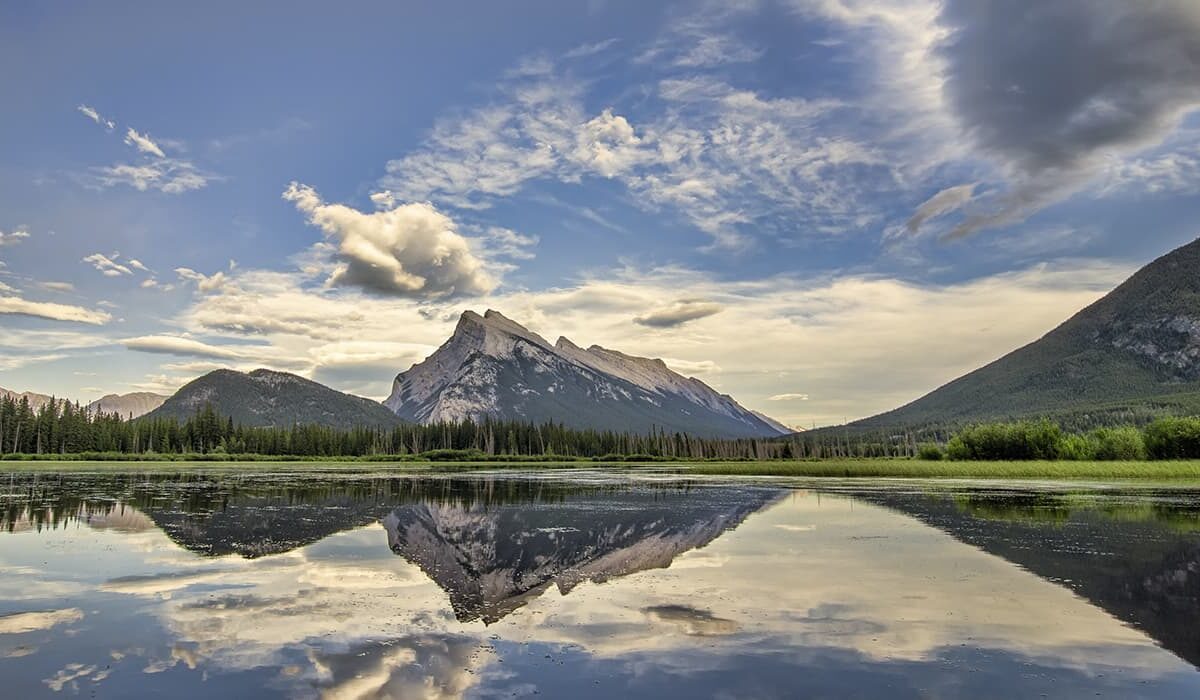Canada is renowned for its lush nature and beautiful scenery, so there are many nature reserves and national parks to choose from. One of them is Banff, a wonderful place where you can fully enjoy the harmony with nature.
The park is located in Alberta and covers about 6.6 thousand km². Created at the end of the century before last, the park is one of the oldest natural sites in Canada. It is adjacent to the Rocky Mountains, as well as other reserves – Yoho, Kootenay and Kananaskis Country.
The park’s current mission is to protect and protect the natural landscape and to introduce it to the many visitors who come here from around the world. More than 4 million people come to Banff each year. Additional activities include rock climbing, skiing, camping, and horseback riding.
History of Creation
Banff Park was formed in 1885 to protect local hot springs. Gradually, its area expanded and transportation accessibility made it attractive to tourists. The boundaries of the park were finally established in 1949, after the province of Alberta gave him a small portion of its land. 2010 was a jubilee year for Banff: the park celebrated its 125th anniversary. In honor of such an event the management opened a new 26-kilometer trail in the park. On it you can walk, as well as ride rollerblades and bicycles.
Highlights
Lakes
Moraine. This body of water has become a kind of “calling card” not only of Banff itself, but also of Canada as a whole. Located glacial lake in the Valley of the Peaks. To get to it, you need to climb to a height of about 2 km. The best time to visit the lake is June, because during that period it is the most full-flowing. The sun’s rays refracting in the clear water, creating an amazing play of light.
Peyto. This body of water has become widely known for its bright turquoise color. Another peculiarity is the shape resembling a dog’s head. The lake is also glacial and is located at an altitude of 1.9 km.
Louise. This lake with emerald water is ideal for boat trips. The reservoir is also glacial and is located at an altitude of 1.7 km. The lake has changed its name several times: the local Indians called it “the lake with the little fish,” then the lake became Emerald, and in the late 19th century it was renamed after the wife of the then governor.
Flora and Fauna
More than half of Banff (55%) is covered by mountain forests. Pines, aspens, junipers and, of course, one of Canada’s unofficial symbols, the Canadian spruce, grow here. Among the flowers in the park you can admire violets, alpine forget-me-nots, linnea nordica. Banff is also famous for its rich collection of mosses (about 250 species) and lichens (about 410 species). You can find them in the rocky areas throughout the park.
The park is inhabited by numerous wild animals. The most common sighting here is the red squirrel. There are also quite a few predators in Banff – cougar, wolverine, c, lynx. Among the herbivores you can see the black-tailed deer, fat-tailed deer, and snow goat.
The park is home to many birds – scientists count about 200 species. Striking representatives are the American nutcracker, blue jay, golden eagle and bald eagle. Grey-cheeked Grebes and stoneflies are not uncommon during walks along water bodies.
Recreation in Banff
In summer you can go hiking, mountain biking, lake hiking, and mountain climbing in the park. Water lovers will enjoy visiting the many hot springs and swimming pools.
In the cold season, Banff is a great ski resort. In addition to snowboarding and downhill skiing, visitors can also go dog-sledding or snowshoeing. The ice-covered lakes make excellent ice rinks.
In Banff there are numerous cultural, entertainment and sporting events. These can include marathons, alcoholic beverage tastings or the presentation of new films and literature.

